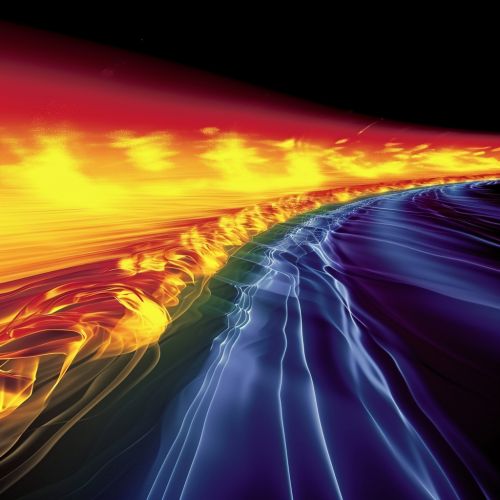Radiative Transfer
Introduction
Radiative transfer is a physical phenomenon that involves the transmission of energy in the form of electromagnetic radiation. The process is fundamental to a variety of scientific disciplines, including astrophysics, atmospheric science, and remote sensing. The theory of radiative transfer seeks to quantify and describe how radiation propagates through and interacts with matterRadiation.
Fundamental Concepts
Radiative transfer is governed by a set of fundamental concepts and principles. These include the Planck's law, the Stefan-Boltzmann law, the Kirchhoff's law of thermal radiation, and the Beer-Lambert law. Each of these laws provides a different perspective on the behavior of electromagnetic radiation as it interacts with matter.
Planck's Law
Planck's law describes the spectral density of electromagnetic radiation emitted by a black body in thermal equilibrium. It is a fundamental principle in quantum mechanics and is named after Max Planck, who first proposed the law in 1900Quantum Mechanics.
Stefan-Boltzmann Law
The Stefan-Boltzmann law states that the total energy radiated per unit surface area of a black body in unit time is directly proportional to the fourth power of the black body's absolute temperature. This law is derived from Planck's law and is named after Josef Stefan and Ludwig Boltzmann, who discovered and derived the law, respectively.
Kirchhoff's Law of Thermal Radiation
Kirchhoff's law of thermal radiation states that the emissivity of a material is equal to its absorptivity at the same temperature. This law is named after Gustav Kirchhoff, who first formulated the law in 1859.
Beer-Lambert Law
The Beer-Lambert law describes how the absorption of light by a substance is related to the properties of the substance and the light itself. It is named after August Beer and Johann Heinrich Lambert, who independently discovered the law.
Radiative Transfer Equation
The radiative transfer equation (RTE) is a fundamental equation in the theory of radiative transfer. It describes how radiation propagates through a medium, taking into account absorption, emission, and scattering processes. The RTE is a complex integro-differential equation that can be solved using various numerical methods, including the method of moments, the discrete ordinates method, and the Monte Carlo methodNumerical Methods.


Applications
Radiative transfer has a wide range of applications in various scientific disciplines. In astrophysics, it is used to model the propagation of light through the interstellar medium and the atmospheres of stars. In atmospheric science, it is used to model the propagation of solar radiation through the Earth's atmosphere, which is essential for understanding climate change and weather patterns. In remote sensing, it is used to interpret the data obtained from satellite-based sensors, which is crucial for environmental monitoring and resource management.
Astrophysics
In astrophysics, radiative transfer is used to model the propagation of light through the interstellar medium and the atmospheres of stars. This is essential for understanding the physical properties of stars and galaxies, as well as the structure and evolution of the universe.
Atmospheric Science
In atmospheric science, radiative transfer is used to model the propagation of solar radiation through the Earth's atmosphere. This is crucial for understanding climate change and weather patterns, as well as the energy balance of the Earth's climate system.
Remote Sensing
In remote sensing, radiative transfer is used to interpret the data obtained from satellite-based sensors. This is crucial for environmental monitoring and resource management, as it allows scientists to infer the properties of the Earth's surface and atmosphere from the observed radiance.
